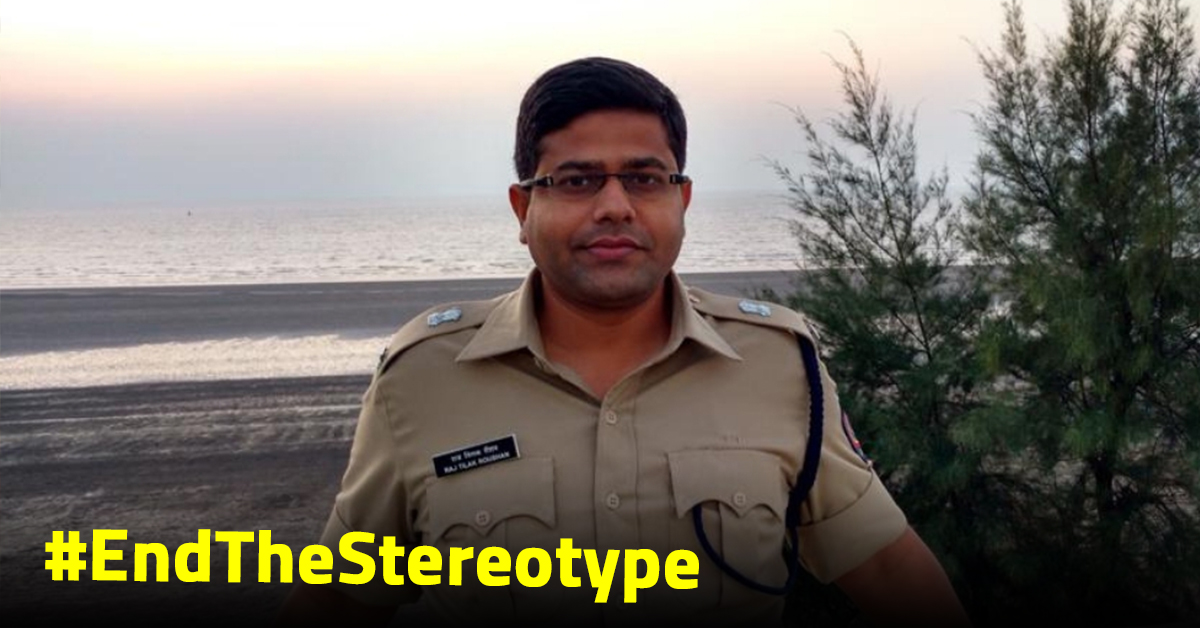In 2017, Palghar, Maharashtra, a change was taking place. 89 per cent of the minor-missing cases were solved and 450 children were either reunited with their parents or found shelter in Child Welfare Centres. Additionally, more than 100 victims of sex and labour trafficking were rescued.
The person behind it all was IPS Officer Raj Tilak Roushan, Additional Superintendent of Police of Vasai-Virar, Palghar.

“While working in the private sector, you are only making rich people richer. At the peak of my professional career, I found my true calling, which was to serve the country. Hence, I prepared for the Civil Services and joined the Indian Police Service,” says Raj, an alumnus of IIT Kharagpur, who heard the call of duty when he was working in the private sector.
When he was transferred from Osmanabad to Vasau-Virar, Palgarh, the first thing Raj did was study the crimes in the district. He was shocked to see the missing-children statistics. In Palgarh alone, 30 to 40 cases of missing children were being registered per month under section 363 of the Indian Penal Code (legal provision for kidnapping).
“It was important that these cases are taken seriously and investigated just like other serious offences like murder. We needed to come up with a more efficient tracking method,” he says.
Every police personnel has to follow the Standard Operating Procedure (SOP) to carry out complex routines by bridging miscommunications and achieving a quality output in the quickest time possible.
Raj, with his team, looked at the available data from the last six years and identified gaps and designed a 72-column objective format proform for missing children cases that covered a complete 360-degree profile of the victim so that everything was covered by the IO (Investigating Officer) during an investigation.
The officers were asked to investigate each case as if it was their own family that had gone missing. Every missing case was investigated as a human trafficking case to solve the case faster. The team held awareness programs and briefed auto and cab drivers as well. An innovative way to spot traffickers was also identified where a lady police constable was briefed to act as a distraught teenager sitting in a public space like a garden with other policemen as backup.
The new protocols worked, increasing the detection rate from 66 to 89 per cent in Palgarh in 2017.
“The new protocol changed my entire methodology and perception towards solving cases of missing minors. The joy of reuniting children with their parents helped me stay committed and focused. Even now, I have profiles of untraced children on my phone. Whenever I get time, I forward the images to my colleagues and sources,” said Maruti Patil, who works at the Crime Branch at Kuala Police Station.
When people think of uniforms, corruption comes to our mind. But heroes like Raj Tilak Roshan prove that the men in khakis are, at times, misrepresented. When the bad make headlines, why don’t the good? The ones that silently guard and protect our streets are not the ones we are told about. Maybe it’s time to hear those stories that aren’t shouted out loud, but whispered through the tides of change.
#EndTheStereotype
This story is part of The Stereotypeface Project, an initiative by The Better India that challenges 26 stereotypes, which continue to exist even today. We are showcasing these stereotypes through all the letters of the English language alphabet.
Stereotypes exist everywhere — they are passed down over generations. Instead of embracing and celebrating what makes us unique, we stand divided because of them!
We’ve unconsciously learned to stereotype, now let’s consciously #EndTheStereotype.
Visit www.stereotypes.in to know more about the campaign and support the effort!
How can you support this campaign?
1. Follow this thread on Twitter or Facebook
2. Re-Tweet / Re-share the stereotypeface that you would like to put an end to
3. Use #EndTheStereotype and tag @TheBetterIndia
Like this story? Or have something to share? Write to us: contact@thebetterindia.com, or connect with us on Facebook and Twitter.
If you found our stories insightful, informative, or even just enjoyable, we invite you to consider making a voluntary payment to support the work we do at The Better India. Your contribution helps us continue producing quality content that educates, inspires, and drives positive change.
Choose one of the payment options below for your contribution-
By paying for the stories you value, you directly contribute to sustaining our efforts focused on making a difference in the world. Together, let's ensure that impactful stories continue to be told and shared, enriching lives and communities alike.
Thank you for your support. Here are some frequently asked questions you might find helpful to know why you are contributing?
